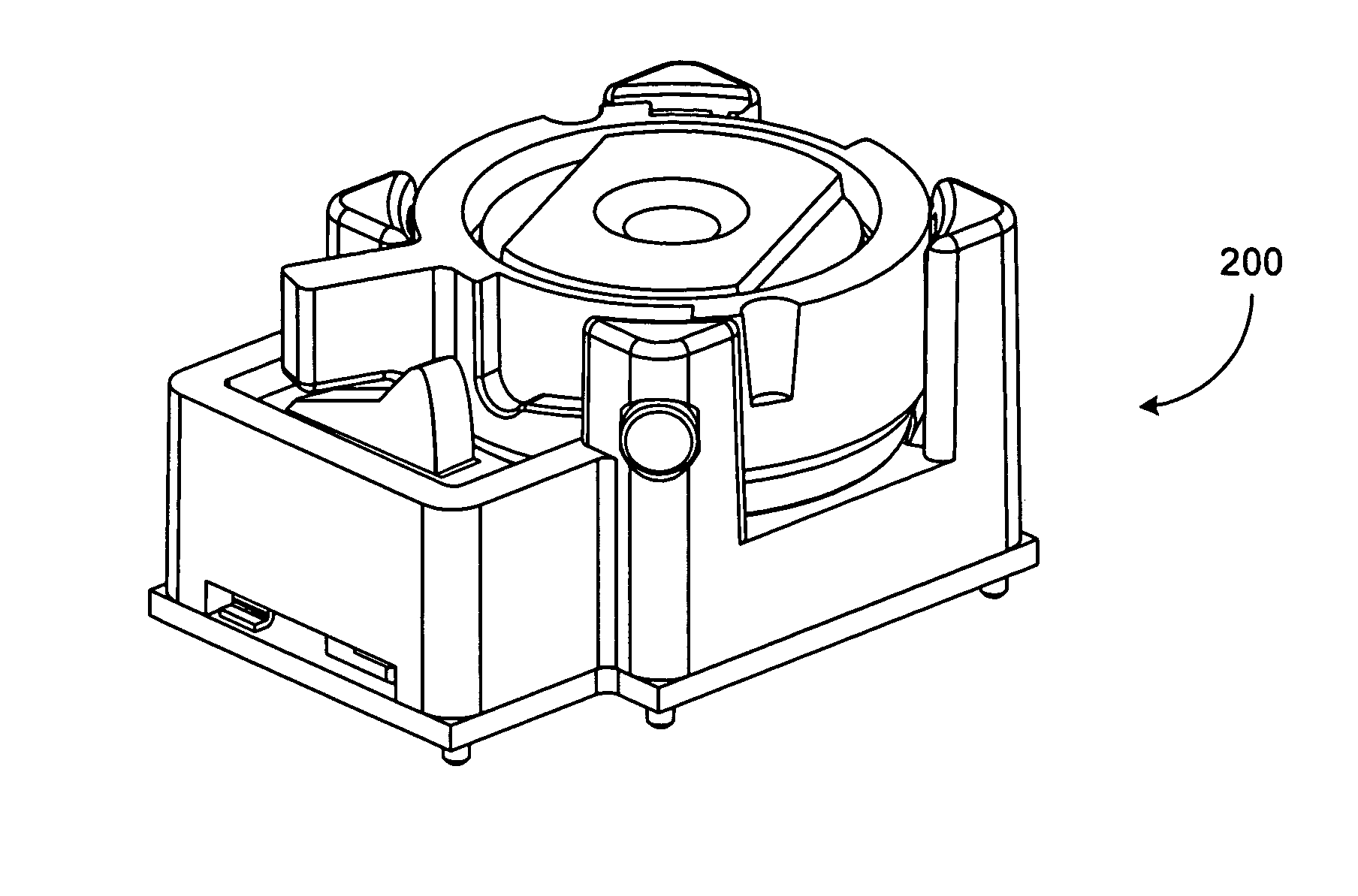Micro camera module with discrete manual focal positions
a micro camera and manual focal position technology, applied in the field of cameras, can solve the problems of increasing the number of parts and assembly time, shortening the battery life, and contributing to the overall cost of the camera
- Summary
- Abstract
- Description
- Claims
- Application Information
AI Technical Summary
Benefits of technology
Problems solved by technology
Method used
Image
Examples
Embodiment Construction
[0031] The present invention overcomes the problems associated with the prior art, by providing a micro camera module with a plurality of discrete manual focal positions. In the following description, numerous specific details are set forth (e.g., particular lens assemblies, particular construction materials, etc.,) in order to provide a thorough understanding of the invention. Those skilled in the art will recognize, however, that the invention may be practiced apart from these specific details. In other instances, details of well known electronic manufacturing and assembly practices and components have been omitted, so as not to unnecessarily obscure the present invention.
[0032]FIGS. 1 and 2 show an assembled camera module 200 in first and second discrete focal positions, respectively. In this particular embodiment, camera module 200 includes a close focal position and an infinite focal position. In the first focal position, camera module 200 focuses on images that are roughly wi...
PUM
 Login to View More
Login to View More Abstract
Description
Claims
Application Information
 Login to View More
Login to View More - R&D
- Intellectual Property
- Life Sciences
- Materials
- Tech Scout
- Unparalleled Data Quality
- Higher Quality Content
- 60% Fewer Hallucinations
Browse by: Latest US Patents, China's latest patents, Technical Efficacy Thesaurus, Application Domain, Technology Topic, Popular Technical Reports.
© 2025 PatSnap. All rights reserved.Legal|Privacy policy|Modern Slavery Act Transparency Statement|Sitemap|About US| Contact US: help@patsnap.com



